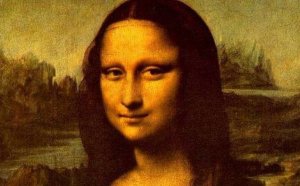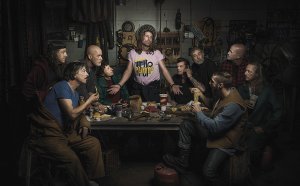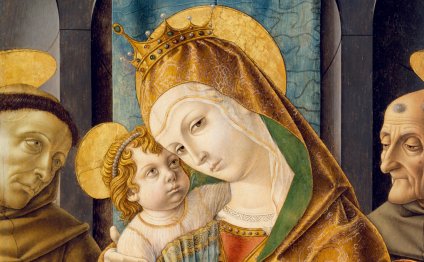
The Renaissance Painting
Wooden panels had to be prepared for artists to paint on. The panels were dried and sanded smooth, then covered with a layer of liquid gesso made by mixing gypsum (a white chalk pounded into powder), with glue made from animal skins. Next, the wood panels were burnished until they were smooth. Many early Renaissance artists added gold leaf to their wood panels to create precious backgrounds and halos. A layer of thin, reddish brown clay was painted over the area to be covered in gold. Gold coins were hammered into thin sheets called gold leaf and applied over the clay. The gold was polished with a burnisher, sticking it to the clay surface. Once the gold leaf was adhered, patterns could be created with punching tools. Areas on the panel that were to be painted were sketched out on the smooth, dry gesso with charcoal made from burnt willow twigs. If the artist wanted a more permanent pattern drawn out before painting, ink could be applied and the charcoal brushed off with a feather.
Different types of tempera paint have been in use since ancient Egypt. Renaissance artists used egg yolk as binding agent, mixing in colored pigments to create egg tempera paint. Artists used minerals and other elements to create different colors and each had to be prepared and blended according to a specific recipe. Artists had their own recipes and sources but around 1390, Cennino Cennini published a book called The Craftsman's Handbook with detailed descriptions of painting procedures. His book gives us a glimpse into the early Renaissance artist's workshop:
On the Character of a Red called Hematite
A color known as hematite is red. This color is natural, and it is a very strong and solid stone. And it is so solid and perfect that stones and crooks are made of it for burnishing gold on panel; and they acquire a black and perfect color, dark as a diamond. The pure stone is the color of purple or turnsole, and has a structure like vermilion. Pound this stone in a bronze mortar at first, because if you broke it up on your porphyry slab you might crack it. And when you have got it pounded, put on the slab as much of it as you want to work up, and grind it with clear water; and the more you work it up, the better and more perfect color it becomes. From: Cennino D'Andrea Cennini, The Craftsman's Handbook. The Italian "Il Libro dell' Arte." Translated by Daniel V. Thompson, Jr. New York: Dover Publications, Inc. 1933, by Yale University Press.
Egg tempera cannot be stored, so each color was mixed when it was needed. Mixing too little paint was a disaster because mixing more paint that would match the first batch perfectly was very difficult. Mixing too much paint was a waste of expensive materials. Because egg tempera dries very quickly, artists had to paint small areas at one time. Artists used brushes made from animal hair, applying colors one by one, sometimes overlapping to create depth.
One to two 40 minute periods
The students will:
- Understand the development of different paints and their properties during the Renaissance.
- Reproduce the properties of egg tempera paint.
- Understand the differences between egg tempera paintings of the early Renaissance and oil paintings of the middle and late Renaissance.
- Learn to distinguish the stylistic differences between egg tempera paintings and oil paintings.
|
Arts and Humanities |
|
|
9.2.8 J. |
Explain and demonstrate traditional technologies (i.e. paints, tools). |
|
9.2.8 E. |
Analyze how historical events and cultures impact forms, technologies and purposes of works in the arts. |
|
Science |
|
|
3.2.7 B. |
Apply process knowledge to make and interpret observations.
|
|
3.4.7 A. |
Describe concepts about the structure and properties of matter.
|
- LCD Projection or large display-sized reproductions of Madonna and Child Enthroned with Angels (Pietro Lorenzetti) and Madonna and Child (follower of Andrea del Sarto).
- Eggs, one per student plus extra to allow for breaks!
- Powdered tempera pigments*
- Small mixing bowls, two per student
- Paper towels
- Toothpicks or other sharp, pointed tools, one per student
- Mixing spoons, popsicle sticks or other mixing implements, one per student
- Water
- Paintbrushes, one per student
- 8" x 10" heavy watercolor paper, cut into quarters, one per student
- A collection of online or postcard sized reproductions of paintings from the Middle Ages and Renaissance.
- Oil paint
- Cleaning solvent
- The "Background" section of this lesson, reproduced as a student handout
*Regular student powdered tempera such as Rich Art Fresco Dry Tempera or cakes that can be ground such as Dick Blick or Prang Tempera Cakes will work nicely for this lesson, or use artists' pigments like those made by Gamblin available from art supply stores.
1. Setting the Stage
(Note: The background section of this lesson might serve as a handout to help students in this activity.)
In the early Renaissance, artists created paintings with powdered, colored pigments mixed with egg yolk as binding agent, called egg tempera paint. Egg tempera dries very quickly, so artists had to paint small areas at one time. If students have ever painted with watercolor paint, the drying time is much the same. Later, in the Renaissance oil paint was invented. Oil paint is translucent; it lets more light through and dries much more slowly. Oil paint allowed Renaissance artists to build up layers of color to show light and depth more convincingly. Because oil paint dries slowly, artists could work on several areas of a painting at one time.
Show students reproductions of Madonna and Child Enthroned with Angels (Pietro Lorenzetti) and Madonna and Child (follower of Andrea del Sarto). Can they tell which is painted with egg tempera and which is painted with oil paints? How can they tell? Explain that they will get another chance to guess, after they make tempera paint with egg yolks just the way early Renaissance artists did.
2. The Renaissance Connection
A teacher demonstration of this process before students start to work would be helpful for students to understand each step of egg tempera paint production.
YOU MIGHT ALSO LIKE
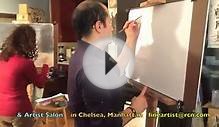
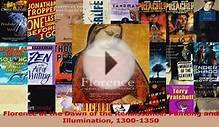
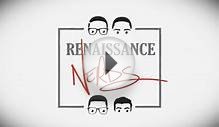
Share this Post
Related posts
List of Renaissance Paintings
The Early Italian Renaissance art refers to an artistic movement that started in Florence and other rich north Italian cities…
Read MoreFamous Renaissance paintings
Sometimes, when the light hits their chiseled features just the right way, it’s easy to see how certain celebrities could…
Read More
